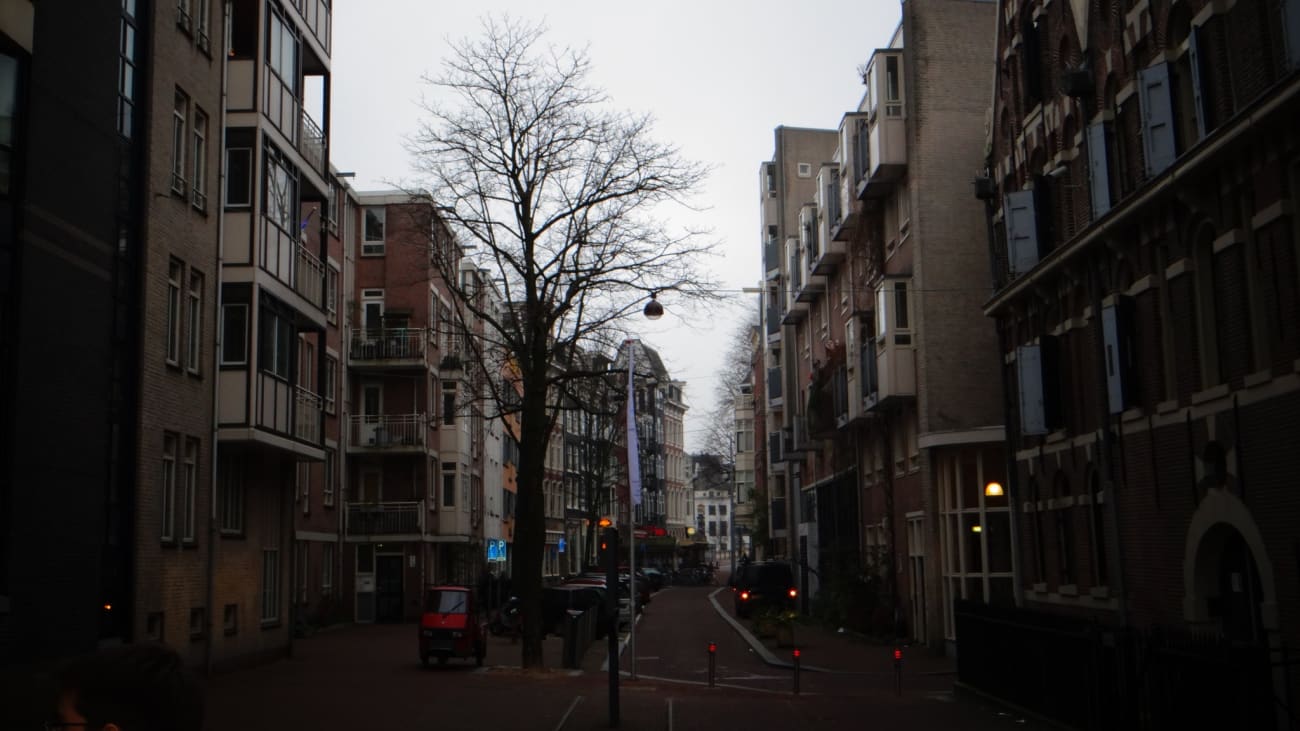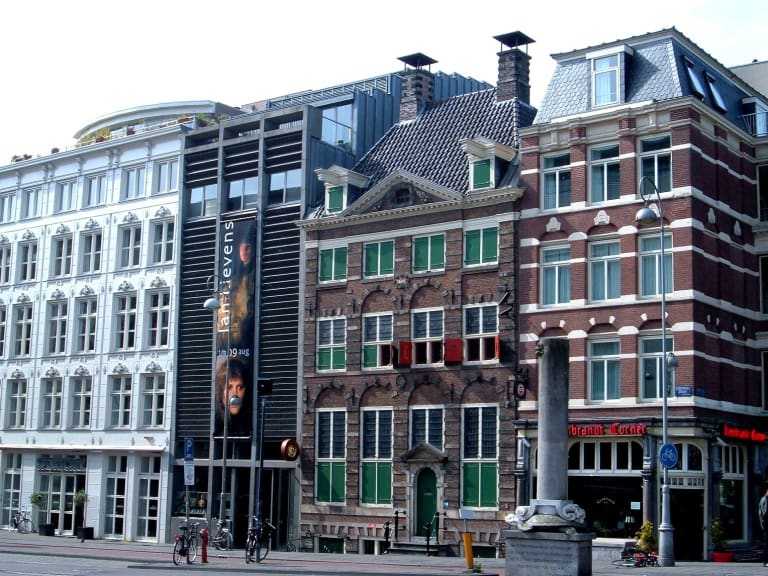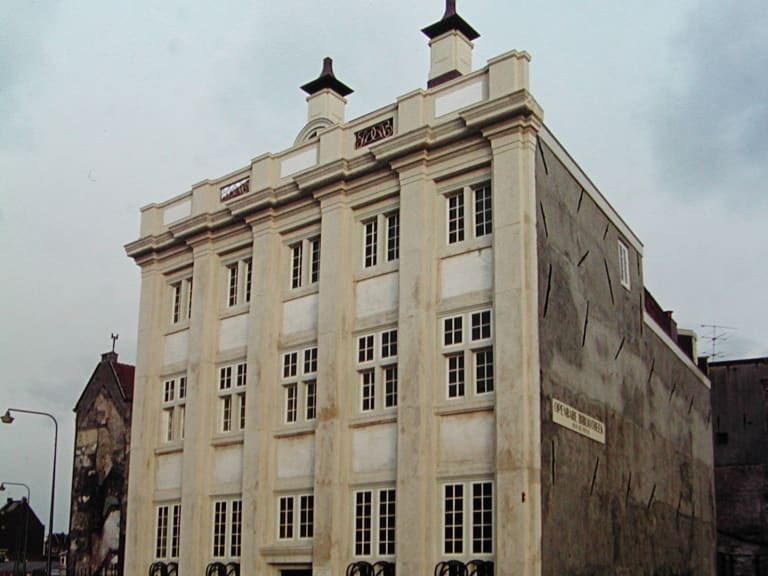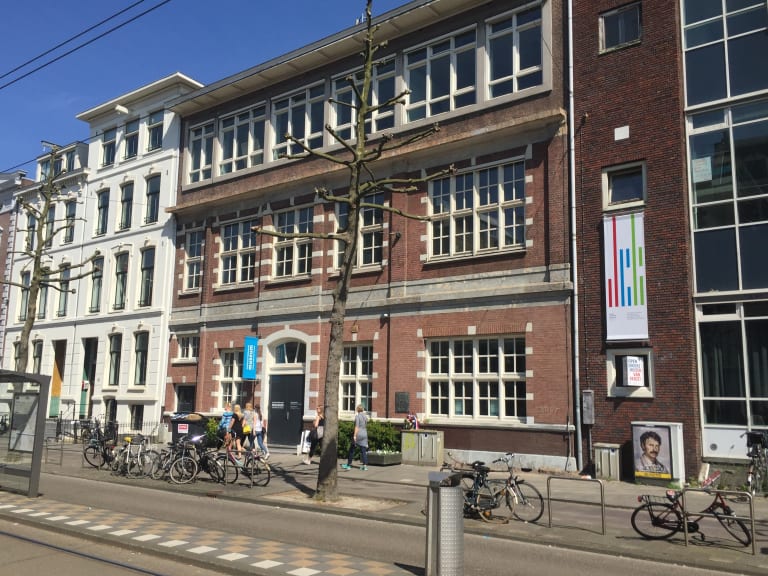11 Things to Do in the Jewish Quarter of Amsterdam
Few neighborhoods have as much history as Amsterdam's Jewish quarter. Here's what you can't miss on your visit, either on your own or with a guided tour.

Jewish Quarter, Amsterdam | ©Lulumonster25
In Amsterdam, the area between Nieuwmarkt and Plantage was historically known as Jodenbuurt (the Jewish Quarter). This neighborhood contains many buildings of historical significance and is managed by The Jewish Cultural Quarter, an organization dedicated to the preservation of Jewish culture within Amsterdam.
You can access all of these buildings with a single ticket purchased at any ticket office associated with the Jewish Cultural Quarter.
1. Visit the Rembrandt House

Booking tickets for the Rembrandt House has to be on your Amsterdam bucket list. This 17th century property of the famous Dutch painter is located on the street that used to be the center of Jewish life and features an exhibition about the artist's life, his time and an interesting collection of his paintings and prints.
The mansion was built in 1607 and, before Rembrandt, had housed several artists and merchants. The artist himself acquired the property in 1639. I recommend you set aside some time to go into the small museum store, as you can find some reasonably priced souvenirs. The house-museum is open every day from 10 am to 6 pm.
It is also the house where the artist had lived and worked for almost two decades and was where he made his magnificent work The Night Watch, which you can see if you take a guided tour of the Rijksmuseum, another must-see museum. Although the painter was not Jewish, his paintings often reflect his life among the Jews: scenes from the Old Testament and many portraits of Amsterdam Jews.
2. Make a stop at the Jewish Historical Museum

Housed in a complex of four Ashkenazi synagogues dating from the 17th and 18th centuries, this is the main museum in the Jewish Cultural Quarter and one of the most important museums in Amsterdam. It is less focused on the Holocaust and more on aspects of Jewish life and the relationship of the community and the city, being the only Jewish historical museum in the whole country to have under its possession some of the most important documents and manuscripts of the community.
Known as "Mokum" in Hebrew, Amsterdam was a haven for Jews, where Jewish communities such as the Sephardim from the Iberian Peninsula and the Ashkenazi from Central and Eastern Europe sought refuge. Although part of the same ethnic group, these two communities differed greatly on an economic and status level. This is one of the themes that the Jewish Museum in Amsterdam deals with.
If Jewish culture interests you, you are obliged to book your ticket to the Jewish Museum. Regarding the opening hours, it is open every day from 11 am to 5 pm. On Saturday and Sunday there is usually a market in the adjacent square. Below, I leave you an article on the means of transport in Amsterdam to see how to get there.
3. Delve into history with an Anne Frank tour of Amsterdam's Jewish quarter

And of course, on your trip you have to book an Anne Frank tour of the Jewish Quarter, where you will explore the Jewish Quarter and the story of Anne Frank during World War II with a professional guide who will tell you everything you need to know about the time when the city was under German rule.
In addition, you will explore the Jodenbuurt and Jordaan neighborhoods and pass by the Jewish Historical Museum and the Anne Frank House on this fantastic and moving tour that will take you deeper into this dark episode of history.
4. Visit the Gassan Diamonds diamond factory

Gassan Diamonds is an imposing brick building dating back to 1897. One-hour tours in several languages include a visit to the diamond cutting and polishing areas, as well as a look at Gassan's glittering collection of watches, diamonds and jewelry. You can book the tour of the Gassan Diamonds diamond factory, the building daily from 9 a.m. to 5:30 p.m.
Before World War II, many local Jews worked as diamond cutters and polishers. It was once the largest diamond polishing factory in the world and the first to use steam for power.
5. Don't miss the Uilenburger Synagogue in Amsterdam

Round windows with the Star of David adorn the elegant Uilenburger Synagogue dating from 1766. The Sephardic community of Amsterdam was one of the richest in Europe during the Dutch Golden Age, this wealth is reflected in this great synagogue, one of the most visited tourist attractions in the Jewish Quarter.
The entrance fee is 15 euros, and also allows you to visit other buildings in the neighborhood. Hours are from 10 am to 5 pm every day except Saturday.
As a curious fact, this synagogue located in the heart of the Jewish Quarter replaced a house of prayer from 1724. Synagogue services, musical performances and other organized gatherings take place here. Usually on Friday evenings, Saturday mornings and holidays.
6. Meet the Pinto House

One of the few survivors of the entire development along St Antoniebreestraat is the Pintohuis, now a public library. Easily visible because of its Italianate facade, it is named after Isaac de Pinto, a Sephardic Jew who fled Portugal to escape the Inquisition and later became a founder of the Dutch East India Company.
If you book a tour of the Jewish quarter, I highly recommend you check it out. Admission is free and it is open Monday through Friday from 10:30 a.m. to 5:30 p.m., and Saturday from 1 to 5 p.m.
Pinto bought the property in 1651 and quickly remodeled it in grand style. The mansion was the pearl of the city, even more so when Pinto traced the interior in a style never seen before: As you enter you can admire the beautiful frescoes on the ceiling, with lots of gold and birds drawn on it. There are also more recent additions at the entrance, such as the little cherub reading a book.
7. Go to the Portuguese Synagogue, one of the oldest in the world

Visiting the second oldest synagogue in Europe is a luxury. In addition, the ticket also gives you access to the Jewish Historical Museum across the street. The synagogue is open Sunday through Thursday from 10am to 4pm and Friday from 10am to 3pm and I recommend you visit if you book a tour of Amsterdam's Jewish Quarter.
I advise you not to skip the less main areas of the building (boardroom, winter synagogue, bathrooms, office, candle room, mourning room, rabbinate, etc.), as they show much more than you might think. Also be sure to go downstairs to visit the treasure chambers which house some items such as 19th century manuscripts or gold thread tapestries. You can also check out a number of books belonging to the oldest Jewish library in the world.
The option to enjoy religious freedom is what brought most Jews from all over Europe to Amsterdam. The city gained a reputation for being tolerant and offering equal rights to people of all communities, and so a century later, in 1665, the Portuguese Synagogue was built. Also known as the Esnoga, at that time it was the largest synagogue in the world, having been inspired by Solomon's Temple in Jerusalem.
8. See the statue of the dockworker

Outside the Portuguese synagogue, standing upright and well centered in a small square, is the statue of the dock worker, by Dutch sculptor Mari Andriessen. This statue honors the workers of Amsterdam, especially those who went on strike in February to protest the Nazi treatment of the city's Jews.
To give you an understanding of the significance of this statue, on February 26, 300,000 people joined the protests. On the third day, the strike was harshly suppressed by the Germans, but it is still commemorated every February 25 with an annual wreath-laying ceremony near the dock worker statue.
An event you should attend if you visit Amsterdam in February. All political parties, as well as the city's public transport authorities and Holocaust survivor organizations, participate in the remembrance.
9. Learn more about the history at the National Holocaust Museum

If you book a tour of Amsterdam's Jewish quarter, this museum is worth a visit, as it has an important story to tell. It focuses on how Jewish children (up to the age of 12) had to wait, separated from their parents, for deportation. It is open daily from 11 a.m. to 5 p.m.
Visiting the Holocaust Museum is a very moving experience, as it has objects belonging to young children along with their stories. There is also an exhibition of photographs, most of which were found years after the war in personal collections or antique stores. Many stories are shared through these photos and accompanying documents. More than 104,000 Dutch Jewish individuals did not survive the war.
Across the street, you can see the National Holocaust Memorial, which lists all identified victims of the genocide in the Netherlands. A tall, elegant spire sits on top of the Jewish star, the centerpiece of the memorial.
10. Discover all there is to see at the Waterlooplein flea market

The Waterlooplein flea market is one of those destinations that you should not miss if you take the Amsterdam Jewish quarter tour. It is one of the most interesting places and one of the oldest markets in the city. Many items can be found in numerous stalls, and prices vary from stall to stall. The market is open Monday through Saturday from 9:30 a.m. to 6 p.m.
You can find everything from trendy attire and old military uniforms to jewelry, antiques and electronics. You can even get great deals on tattoos, there's nothing this flea market doesn't have. With over 300 stalls, it's big enough to see the whole thing in just a few minutes. So be sure to set aside enough time for your visit.
From a historical point of view it was built in the early 19th century and was the most successful Jewish market in the city until World War II, when the Jews were banished. After the war, the market was revived and has since become one of Amsterdam's main tourist attractions. For more information about the market, visit the following website.
11. Go to the Hollandsche Schouwburg, the theater representing the Jewish persecution

The Hollandsche Chouwbusrg, once a popular theater, was one of the most brilliant sites of the performing arts and staged well-known plays and dramas. However, after the Nazi occupation, it became a place of tragedy for Jewish families. Today, you can visit it for free, as it narrates two different versions: the heyday of the Jewish community and the decline after the German invasion.
After World War II, the difficult situation of the theater did not improve. Due to protests, the glory of this magnificent theater never rebounded. In 1960, the building was converted into a memorial in honor of all the Jews who were lost in the Holocaust.
The place that once housed the former stage now bears a reflection of the tragic Jewish persecution. In 1993, a memorial chapel was installed that mentions more than 6,700 families, approximately 104,000 Dutch Jewish individuals. A must-see if you book a tour of Amsterdam's Jewish Quarter.
